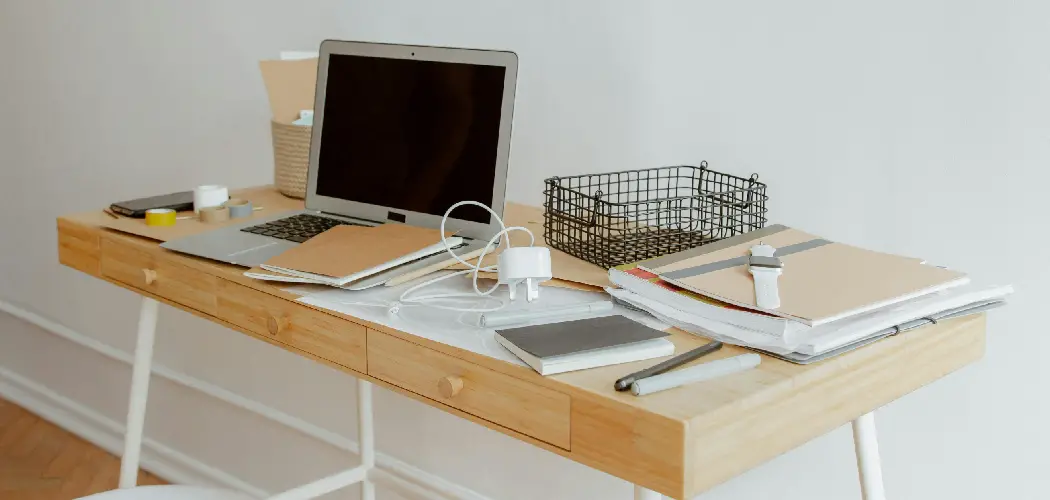Adjusting the height of your desk can significantly enhance comfort and productivity, whether you’re working, studying, or pursuing a creative project.
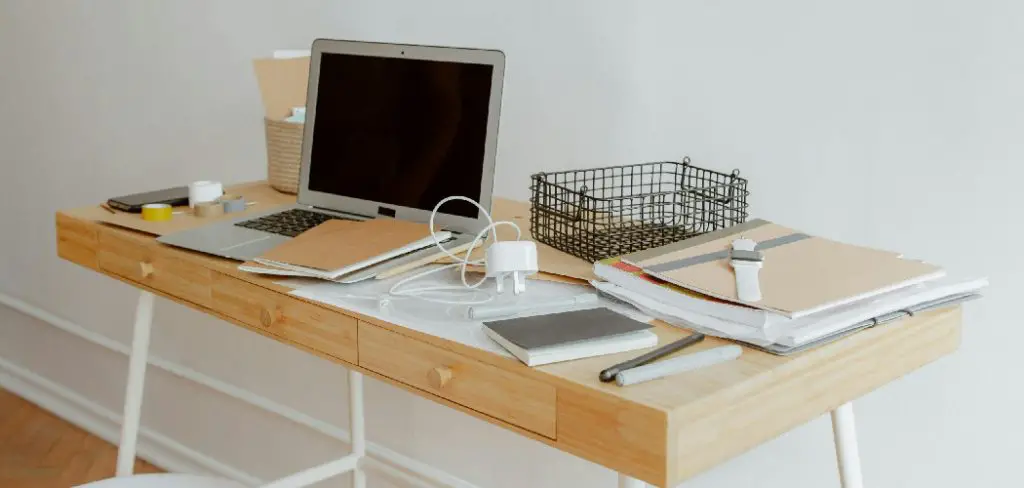
A properly raised desk helps to maintain good posture, reduce strain on your back and neck, and create an ergonomic workspace. This guide will walk you through how to raise a desk.
Benefits of an Ergonomic Desk Height
Maintaining an ergonomic desk height offers numerous advantages for your overall health and productivity. Firstly, it promotes proper posture, helping to align your spine and reduce the risk of developing back, shoulder, and neck pain over time.
Secondly, it minimizes physical strain, allowing you to work comfortably for extended periods without fatigue. Additionally, an optimal desk height can enhance focus and efficiency, as it prevents unnecessary distractions caused by discomfort.
By reducing the risk of repetitive strain injuries, such as carpal tunnel syndrome, an ergonomic desk height also supports better hand and wrist health. Ultimately, investing in the right desk height creates a workspace that fosters both well-being and long-term performance.
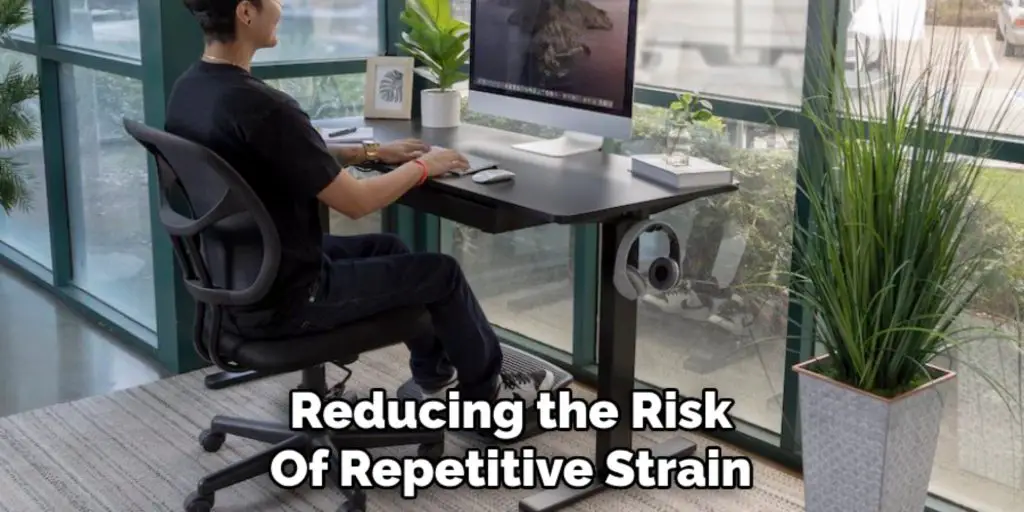
Tools and Materials Needed
Before raising your desk, gather the following tools and materials to ensure the process goes smoothly:
- Adjustable Wrench: Useful for loosening and tightening bolts or screws on certain desk models.
- Screwdriver: Essential for desks that require screws to adjust the height.
- Measuring Tape: Helps measure the desired desk height for optimal ergonomics.
- Allen Wrenches (if applicable): Some desks include specific bolts that require Allen wrenches for adjustment.
- Level (optional): Ensures that your desk is even and stable after adjustments.
- Instruction Manual (if available): Referencing the desk’s manual can provide model-specific guidance for adjustments.
Having these items ready will make the height adjustment process quicker and more efficient.
10 Methods How to Raise a Desk
1. Use Adjustable Desk Risers
Adjustable desk risers are a versatile and straightforward solution for raising your desk. These risers come in various designs, typically consisting of sturdy platforms or legs that sit under each corner of your desk. They can be adjusted to different heights, allowing you to customize your desk’s elevation according to your preferences.
When selecting desk risers, consider their weight capacity to ensure they can support your desk and equipment securely. Installation is usually simple, requiring you to lift each corner of the desk and slide the risers underneath. This method is ideal for those who want a hassle-free and non-permanent solution.
2. Install Height-Adjustable Desk Legs
Height-adjustable desk legs are an excellent option if you’re looking for a permanent and more professional way to raise your desk. These legs replace the existing ones and can be manually or electronically adjusted to achieve the desired height.
Electronic versions often include memory settings for different heights, making it convenient for shared workspaces. To install adjustable legs, you’ll need to detach the original legs from your desk and attach the new ones, following the manufacturer’s instructions. This method works well for those seeking a sleek, modern look and functionality.
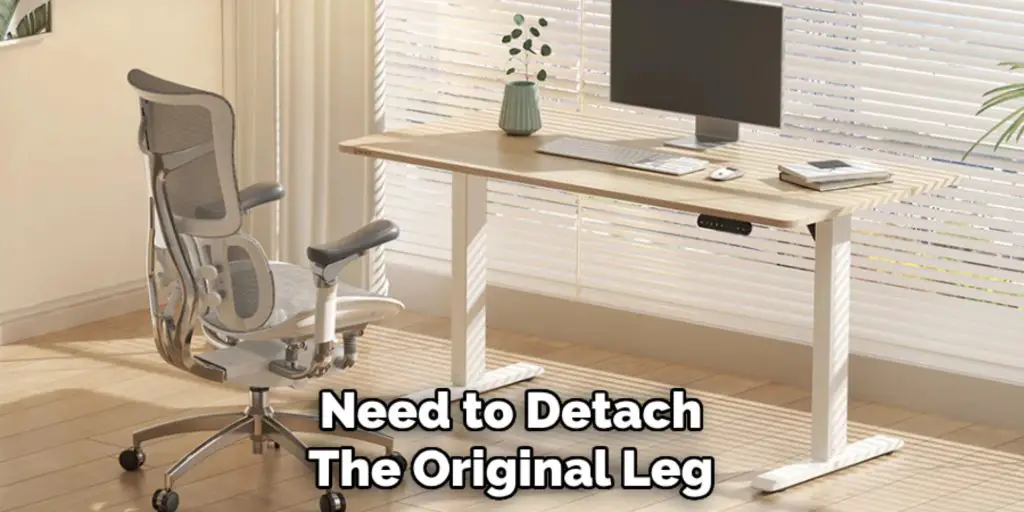
3. Add Furniture Risers
Furniture risers are a budget-friendly and widely available option for raising a desk. These small platforms, usually made of plastic, metal, or wood, are designed to be placed under the legs of furniture. They come in various heights and styles, making it easy to find a set that matches your desk.
When using furniture risers, ensure they fit securely under your desk legs to prevent wobbling. This method is particularly effective for lightweight desks and provides a quick solution without requiring significant modifications.
4. Place Wooden Blocks Under Desk Legs
If you prefer a DIY approach, wooden blocks can serve as an effective way to raise your desk. Measure and cut blocks to your desired height, ensuring they are sturdy and level. Sand the edges for a smooth finish and paint or stain them to match your desk if aesthetics are important.
To install, simply place a block under each leg of your desk, securing them with non-slip pads or adhesive if needed. This cost-effective method is ideal for those who enjoy hands-on projects and want a customizable solution.
5. Use a Desk Converter
Desk converters are a popular choice for individuals transitioning to a standing desk setup. These platforms sit on top of your existing desk and can be adjusted to different heights. Some models are designed to hold just a monitor and keyboard, while others can accommodate a laptop or additional accessories.
Desk converters are portable, allowing you to switch between sitting and standing positions effortlessly. This method is perfect for those who want to improve ergonomics without altering their desk’s structure.
6. Attach Casters with Adjustable Height
Adding casters to your desk legs can raise its height while also making it mobile. Adjustable-height casters provide the flexibility to fine-tune the desk’s elevation.
To install, remove the desk’s existing leg caps or feet and attach the casters using screws or brackets, depending on the design. Ensure the casters have locks to prevent unwanted movement. This method is especially useful for those who frequently rearrange their workspace or need a portable desk.
7. Stack Interlocking Bed Risers
Interlocking bed risers are a creative and effective way to elevate your desk. These risers are designed to stack securely, allowing you to achieve the desired height by adding or removing sections.
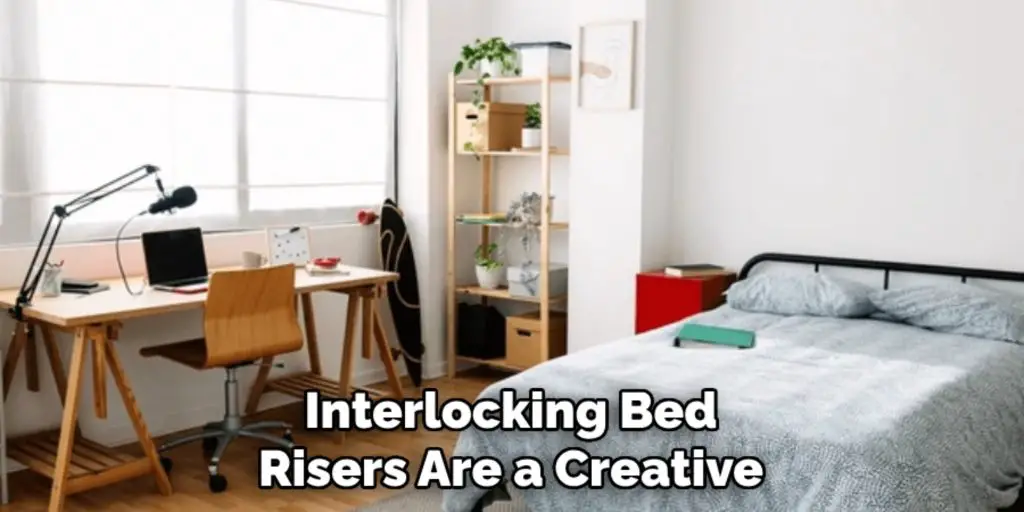
They are typically made of durable plastic and can support significant weight. To use, simply place a riser under each leg of your desk and stack additional pieces as needed. This method is ideal for those who need a flexible and easy-to-implement solution.
8. Build a Custom Desk Platform
For a more permanent and visually appealing solution, consider building a custom platform for your desk. This platform can be constructed from wood, metal, or other sturdy materials and designed to fit your desk’s dimensions. Include features like cable management holes or storage compartments to enhance functionality.
Building a platform requires basic carpentry skills and tools, but it allows for complete customization. Once completed, place your desk on top of the platform to elevate it to the desired height. This method is perfect for those seeking a long-term solution tailored to their needs.
9. Replace the Desk Top with a Taller Surface
Swapping your desk’s surface for a thicker or taller one can effectively raise its overall height. This method involves purchasing a new desktop or repurposing a sturdy tabletop.
Ensure the new surface is compatible with your desk’s frame and securely attach it using brackets or screws. By increasing the thickness of the desktop, you’ll achieve a subtle elevation without altering the desk’s legs. This approach is ideal for those who want a seamless and integrated look.
10. Combine Multiple Methods
In some cases, combining methods can provide the best results. For example, you might use adjustable desk risers in conjunction with a desk converter to create a multi-level workspace.
Alternatively, pairing furniture risers with a custom platform can achieve significant height increases while maintaining stability. When combining methods, ensure all components are compatible and securely installed to avoid accidents. This approach is suitable for those with unique requirements or specific ergonomic needs.
Things to Consider When Raising Your Desk
When choosing a method to raise your desk, it’s essential to take several factors into account to ensure both functionality and safety. Here are some key considerations:
- Stability: Ensure the desk remains stable after elevation, especially if you use heavy equipment like monitors or printers. Wobbling or an uneven surface can lead to potential hazards.
- Weight Capacity: Check the weight capacity of any risers, casters, or desk converters you plan to use. Overloading these components can result in damage or even collapse.
- Height Adjustment Needs: Consider whether you need a fixed height or if you prefer the flexibility of adjustable-height solutions. Adjustable options can accommodate different users or tasks.
- Aesthetics: Choose a method that complements the design of your workspace. For example, custom platforms or wooden blocks can be finished to match your desk.
- Ease of Installation: Evaluate how much time, effort, and tools are required for installation. Some methods, like furniture risers, are quick and simple, while others, like height-adjustable desk legs, may require more effort.
- Ergonomics: Ensure the new desk height aligns with ergonomic principles, facilitating proper posture and reducing strain on your body. Your arms should rest comfortably at a 90-degree angle while typing.
- Budget: Determine how much you’re willing to spend. Some solutions, such as wooden blocks or bed risers, are cost-effective, while others, like desk converters or adjustable legs, can be more expensive.
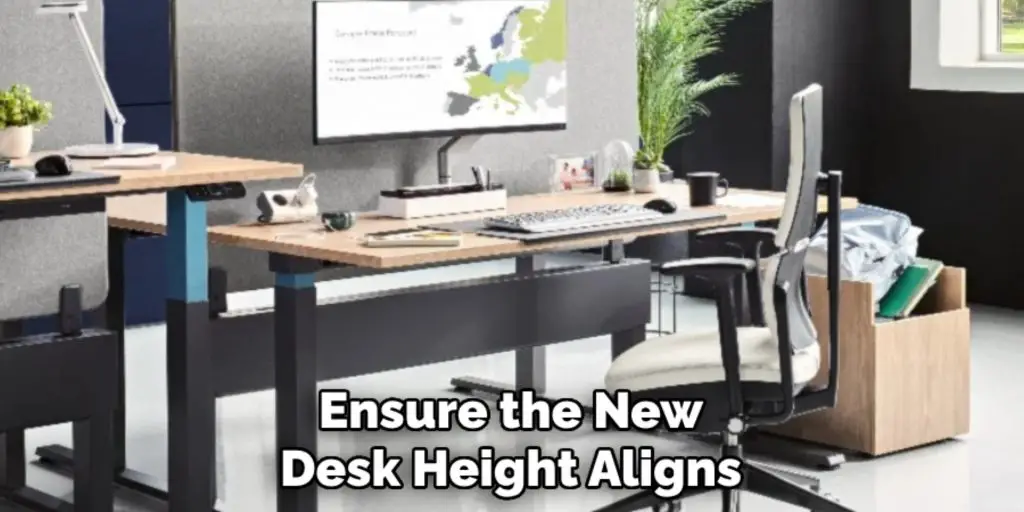
Conclusion
Raising your desk can significantly enhance your workspace ergonomics, productivity, and comfort. Whether you opt for a simple, budget-friendly solution like furniture risers or invest in adjustable desk legs or a converter, there are numerous methods to suit every need and preference.
Always consider factors such as stability, weight capacity, and ergonomics to ensure the chosen solution meets your requirements. Thanks for reading our blog post on how to raise a desk! We hope you found it helpful and informative.

